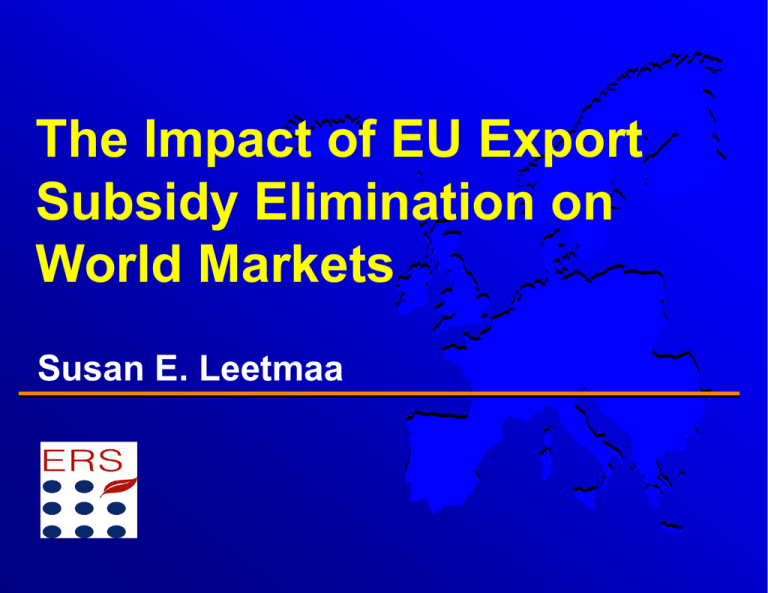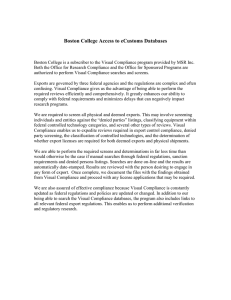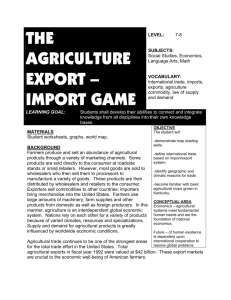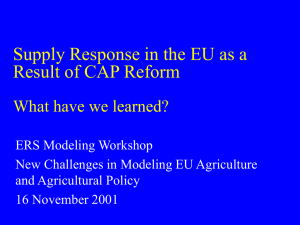The Impact of EU Export Subsidy Elimination on World Markets
advertisement

The Impact of EU Export Subsidy Elimination on World Markets Susan E. Leetmaa Tools the EU could use to limit or eliminate subsidzed exports Production controls Build stocks Reducing support prices and increasing direct payments to compensate producers for the price decline Analysis of EU export subsidy elimination We use the ERS/ESIM model: linear, timedependent, CES, partial equilibrium. Commodities: wheat, barley, corn, other coarse grains, oilseeds and their products, beef, pork, and poultry. – These account for over 50% of EU expenditures on export subsidies and 75% of the volume of subsidized exports. Strong and weak Euro are compared What we analyze We reduce internal price until either. . . Supply equals demand, so the EU will not export, or until EU prices equal world prices, so that no subsidy is required for export. Euro stronger than US dollar, Arable Crops The EU would have exportable surpluses of all grains. Grain prices would fall from a common internal price under the CAP to different world prices for all grains. EU wheat production would increase at the expense of all other grains. EU wheat exports would increase – Barley and rye feeding would increase, wheat feeding would decrease – Oilseed area would increase slightly EU and world grain prices 180 160 140 120 100 80 60 40 20 19 98 /9 9 19 99 /2 00 0 20 00 /0 1 20 01 /0 2 20 02 /0 3 20 03 /0 4 20 04 /0 5 20 05 /0 6 20 06 /0 7 20 07 /0 8 20 08 /0 9 20 09 /1 0 0 Corn Other Coarse Grains Barley Wheat EU Grains @ Baseline EU Grains @ parity Euro stronger than US dollar, Meats EU would continue to be noncompetitive in beef export markets – domestic price decline would decrease production, eliminating need for exports prior to EU price reaching world price. Pork and poultry exports would increase, aided by declining feed costs Euro/dollar parity A weaker Euro would help EU achieve export subsidy elimination Wheat production and export results would be more profound Less of an impact on livestock sector, as producers are less responsive to price changes. Beef still uncompetitive – Pork and poultry exports would only increase slightly over stronger Euro exports. – Impact on World Markets Minimal impact on most sectors Wheat most affected, as increased EU exports would lower world prices, reducing U.S. production and increasing consumption, reducing exports. Reduction in EU livestock exports would increase world prices, increasing U.S. production and exports – largest gains in beef and slight increase in pork Strengths and weaknesses of ESIM • Strengths: Explicit EU policies, very complete feed sector, hence good at projecting production and consumption and estimating volume restriction. • Weaknesses: ESIM is a net trade model (either exports of imports are fixed), therefore we can not measure the impact on wheat imports, which would change significantly if EU prices fell to world prices. No Dairy! Other • Also, we can not accurately model value restriction, as model prices for many commodities are model market clearing prices, not necessarily EU market prices for the commodities (product of fixed stocks).






